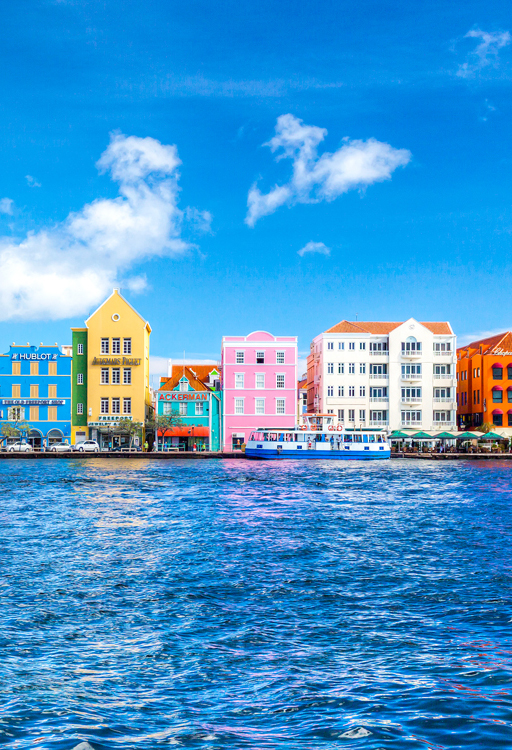Nothing livens up a vacation like a bold splash of color. When visiting new places, it’s often the colorful architecture and rainbow-hued landscapes that stick out in our memories — and make for the best vacation photos. From Morocco’s famed “Blue City” to the jewel of Colombia’s Caribbean coast, these are seven of the most colorful cities you can visit around the world.
San Miguel de Allende, Mexico
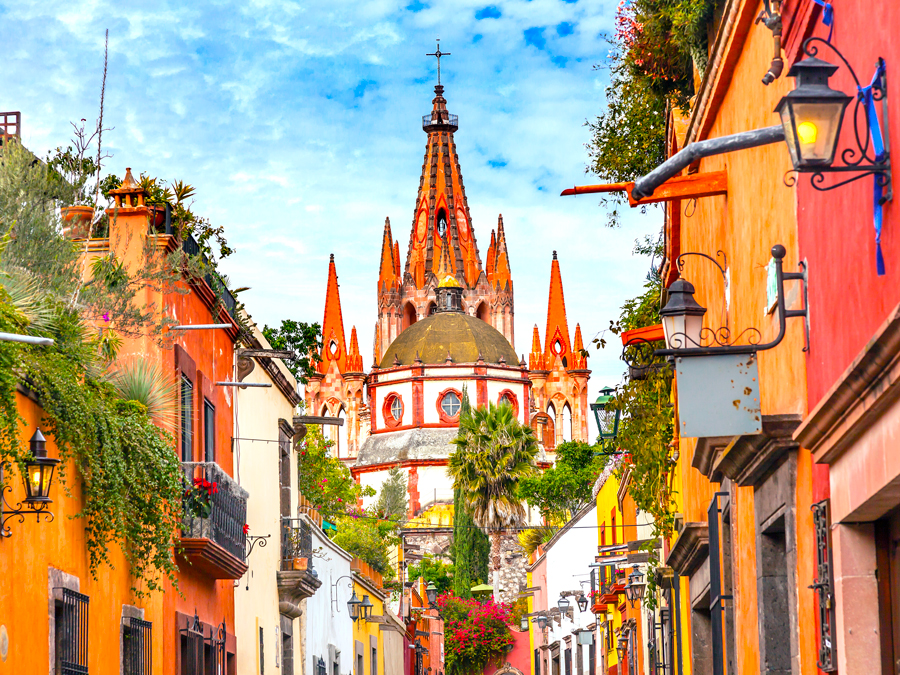
In a country of colorful cities, San Miguel de Allende still manages to stand out. Nestled in central Mexico’s highlands, San Miguel de Allende was originally an Indigenous Chichimeca village called Itzcuinapan until the arrival of the Spaniards in the 16th century. A Franciscan monk named Juan de San Miguel built a chapel in the village in 1542, and the outpost grew in wealth and power as a market for the silver and tin mined in the region. Today it’s a haven for expats, artists, and tourists drawn to its magnificent and well-preserved colonial architecture — recognized as a UNESCO World Heritage Site — as well as the city’s vibrant cultural and culinary scenes.
The Parroquia de San Miguel Arcángel, a neo-Gothic confection with soaring pink towers that’s often compared to a wedding cake, dominates the city’s historic center. A nearby artisan market is bursting with exquisitely crafted jewelry, brightly painted pottery, and hand-woven textiles. On Saturdays, local cuisine takes center stage at the Tianguis Organico, where sellers offer the region’s bounty of honey, cheeses, chocolates, tamales, and more tasty treats. For a bit of exercise and a spectacular view, take a 15-minute stroll from downtown up to El Mirador, a popular tower with a panoramic overlook of the city.
Sintra, Portugal

Though it’s only an hour outside of Lisbon’s hilly cobblestone streets and lively plazas, arriving in Sintra feels like stepping out of Portugal and into the pages of a fairy tale. The entire town comprises a UNESCO World Heritage Site for its dazzling display of European Romantic architecture — perhaps no better illustrated than by Pena Palace.
Splashed in bold hues of red and yellow, Pena towers over the surrounding hills and straight out to the sea — a fantasy of graceful arches, intricate marble carvings, and dazzling tile mosaics. The site began as a humble hilltop chapel in the Middle Ages (after a reported sighting of the Virgin Mary) and served as a monastery for centuries before falling to ruins. King Ferdinand II purchased it in the 1830s to transform the decrepit site into a royal summer residence. Combining architectural elements from many electric styles, the castle as it appears today was completed in 1854.
Willemstad, Curaçao
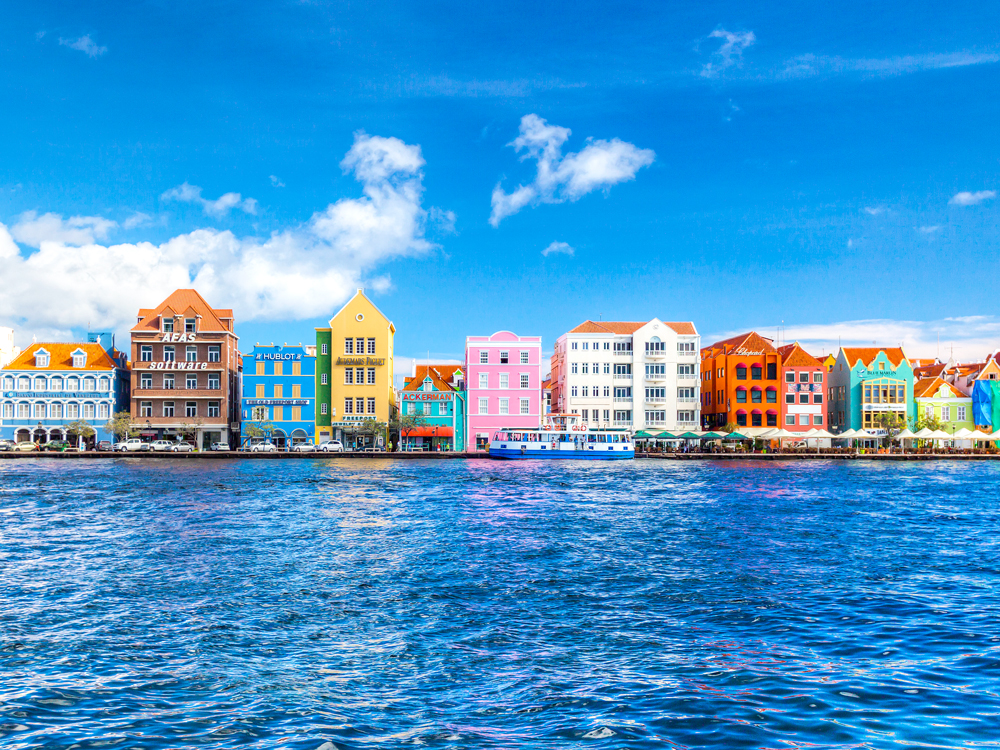
If Amsterdam were small and surrounded by alluring beaches, it would be the colorful Caribbean capital of Willemstad, on the Dutch island of Curaçao. Located 40 miles off the coast of Venezuela, the island itself is only 170 square miles, and Willemstad covers about a third of its area, spreading out around the harbor of Schottegat. Sint Anna Bay separates the city, opening onto a sea as blue as the citrus peel-based liqueur that bears the island’s name.
Four of Willemstad’s neighborhoods combine to form a UNESCO World Heritage Site, recognized for their historic value. Punda, the oldest, sprang up near Fort Amsterdam, which the Dutch built in 1634 after wresting control of the island from Spain. Stroll across the unique Queen Emma Bridge to the neighborhood of Otrobanda, which bustles with shops, galleries, and restaurants serving delicious seafood with both European and West African influences. From here, you can look across the water to postcard-perfect Handelskade — its bright pastel buildings are reminiscent of the tall and narrow homes of the Netherlands.
Chefchaouen, Morocco
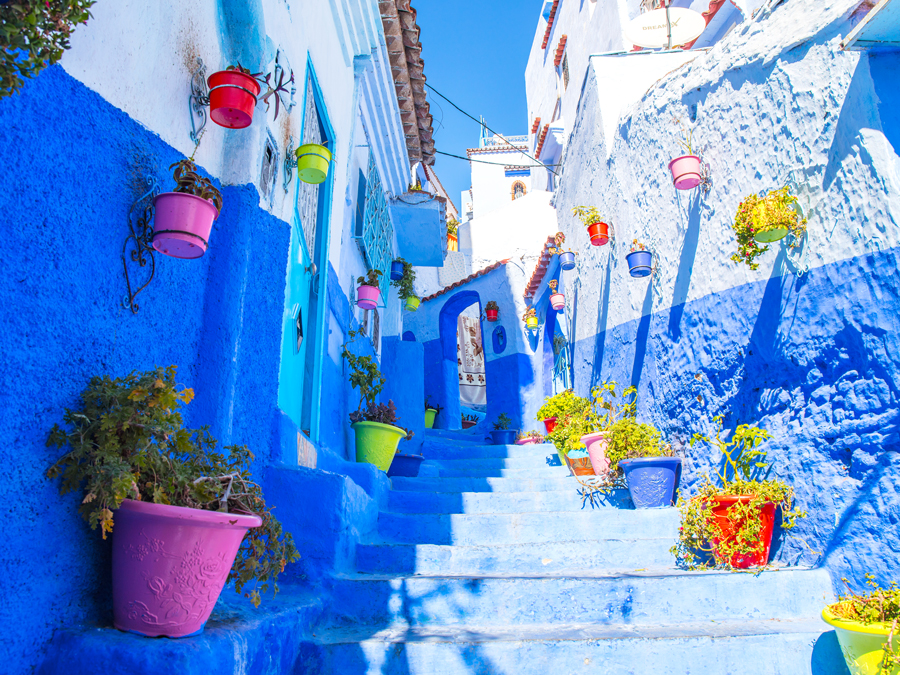
Chefchaouen, a city high in the Rif Mountains of northwest Morocco, is called the “Blue City” or “Blue Pearl” for reasons that become clear the instant you arrive. The kasbah — a walled perimeter once used as a fortress to protect against Portuguese crusaders — is painted an enchanting spectrum of every shade of blue imaginable. The town is no longer confined by the kasbah, yet neighboring homes, mosques, and government buildings have adopted the striking palette as well. Cerulean-washed walls cool the steep and narrow streets, and the many cobalt-stained doors and windows, turquoise flower pots, and lapis stone steps only add to the city’s enchanting appeal.
Some say the local hue — which holds spiritual significance in Judaism — is a contribution of Jewish refugees who settled here during the Spanish Inquisition. The area began to attract attention as part of a popular backpacking circuit in the 1960s, and has exploded in popularity during the Instagram age. Some places are unbelievably better in person than in photos, however — and Chefchaouen is surely one of them.
Jaipur, India
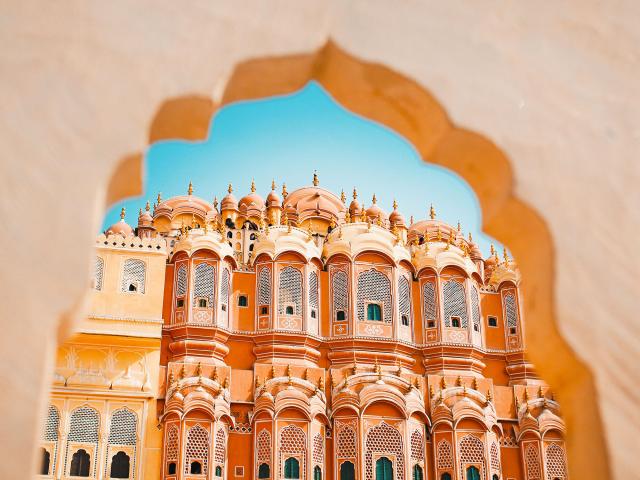
In Jaipur, the capital city of India’s Rajasthan province, pink is everywhere, thanks to the many buildings that showcase the local sandstone and its naturally pink tint. Although the planned city dates to 1727, Jaipur doubled down on the rosy hue in 1876, when it painted many of its ornate palaces an even bolder shade of pink to impress Queen Victoria’s visiting son, Prince Edward VII, who would go on to become the emperor of India. Since then, Jaipur has cemented its status as “the Pink City,” wooing romantics from all over the globe.
The city is dotted with many impressive palaces and temples, but the grandest piece of architecture in Jaipur is undoubtedly the Hawa Mahal (or Palace of Winds), a 1799 addition to the sprawling central palace. The 953 windows of Hawa Mahal are obscured by decorative stone-carved screens, which permitted women of the royal family to gaze outside without being seen, in order to adhere to the strict religious codes of the time. The distinctive five-story palace is stunning any time of day, but in the early morning, the sun illuminates its rosy facade at its pinkest.
Cartagena, Colombia
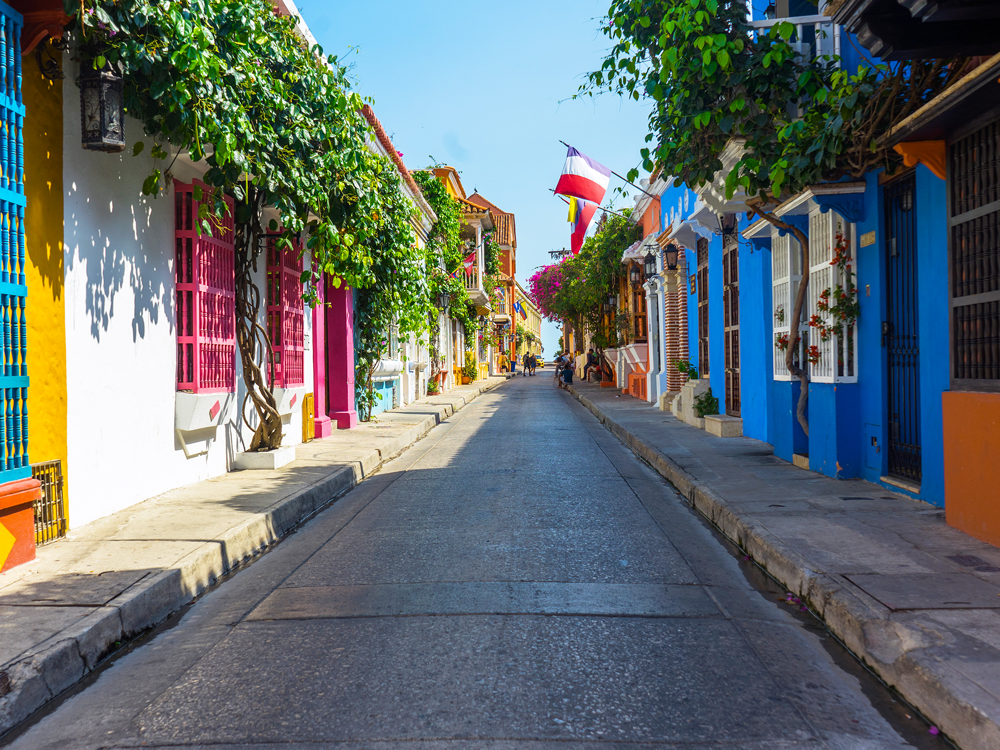
The jewel of Colombia’s northern coast, Cartagena is one of the best-preserved colonial cities in Latin America, well deserving of its nickname the “Queen of the Caribbean.” Still surrounded by its original walls — which stretch almost seven miles around the port and old city — the historic quarter enchants with colorful streets and lovingly maintained colonial architecture that dates back to the 16th century. Cartagena was once an important trade center for the Spanish empire, which constructed the fortifications to protect the colony’s bounty of gems, crops, and other riches against pirate invasions.
Now a UNESCO World Heritage Site, the wall and old city are suffused with a friendly, fun-loving vibe. Stroll the streets along the wall (a leisurely pace will cover it in about two hours) and be sure to stop at one of the many bars atop the wall for a spectacular view at sunset. Local dancers perform daily at Plaza Bolívar, and while you’re there, don’t miss the fascinating treasures at the Zenú Gold Museum.
Valparaíso, Chile
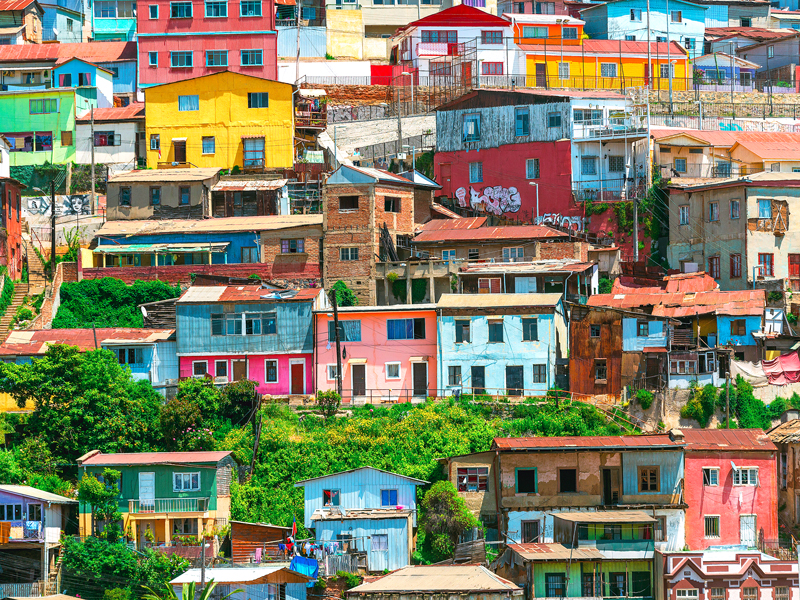
Once the province of nomadic Indigenous fishing peoples, the city of Valparaíso was founded on the Chilean coast in 1536 by the conquistador Juan de Saavedra, who hailed from Spain’s Valparaíso de Arriba and named it after his native village. Though the beginning of the colonial era was relatively quiet along this stretch of the Pacific (with the exception of the occasional pirate attack or earthquake), the years leading up to Chile’s independence from Spain in 1818 saw the development of a major port here. During the subsequent Republican era, that infrastructure made Valparaíso a hub of international trade — which in turn brought entire communities of European immigrants.
That cosmopolitan legacy remains on view throughout the city center of Valparaíso, now listed as a UNESCO World Heritage Site. Among the attributes that qualified this historic quarter as World Heritage-worthy: the many charming squares, incredible lookout points, meandering promenades, and Valparaíso’s unique funicular elevators. The seaside city is unlike any other in Chile: an intoxicating blend of bohemian architectural and bold colors, and a place that inspired some of the country’s most famous artists, including poet-turned-politician Pablo Neruda.
More from our network
Daily Passport is part of Inbox Studio, which publishes content that uplifts, informs, and inspires.






